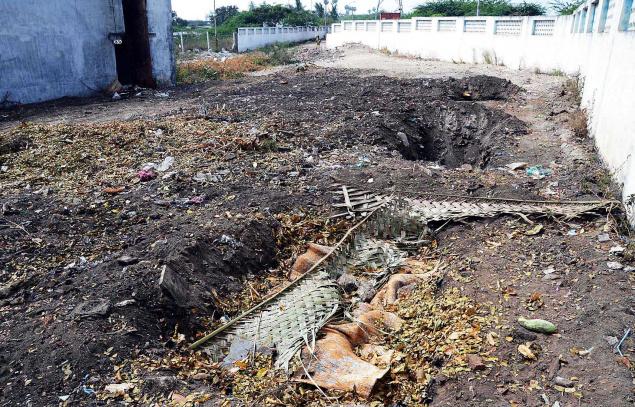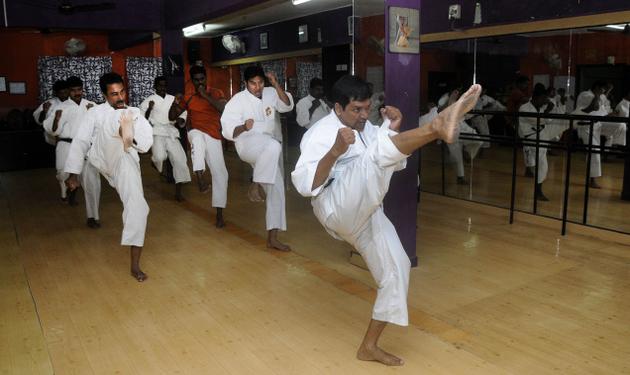The small Sri Mangalambiga Vilas eatery could be easily missed as a non-descript joint in this temple-cum-business town but for a board reading “Since 1914” kept outside amidst the bustle on the lane leading to the Adi Kumbeswarar Temple.
It is not easy to remain in the restaurant business for over 100 years serving traditional South Indian dishes like idly, dosa and others. All the more in Kumbakonam, where almost every eatery serves tasty food and the famed degree coffee.
The success of Sri Mangalambiga Vilas becomes evident when one starts eating the sponge-like soft steaming idly or the crispy dosa (rice or rava) with sambar and coconut chutney.
A little girl who was troubling her mother by refusing to eat the idly on her banana leaf started gulping it down fast after the first bite.
The South Indian coffee – a mix of milk, coffee decoction and sugar – tasted great.
There was a Non-Resident Indian (NRI) family from the US enjoying their meal at the cramped eatery without making any fuss. The staff treated them like any other guests, a pointer that NRI guests are regulars there.
The lunch (rice, sambar, rasam, curd/buttermilk, vegetables) is also good – light on the purse and the stomach. It is a pleasant surprise to hear the staff enquiring from the guests if they wabt second or third helpings of vegetable curries, whereas in such places, you will only get a single small cup.
“The hotel must have been functioning even prior to 1914. But I do not have any record. Based on my father’s age at the time of his death and his age when he came to Kumbakonam I arrived at the year 1914. That is why I have used the words “Since 1914” and not “Established 1914,” proprietor H. Rajagopal told IANS.
He said his father V.G. Harihara Iyer came to Kumbakonam when he was 14 to work in the eatery, then owned by a named Thayu Patti.
“My father died in 1955 when he was 52 years old. By that time, he had bought the hotel from Thayu Patti, who decided to quit the business due to her old age,” Rajagopal said.
In those days the eatery was also called Sannadhi Kadai or Koil Kadai.
While there are outlets in Chennai proclaiming to sell Kumbakonam Degree Coffee, strangely no such boards were visible in Kumbakonam itself.
According to Rajagopal, coffee which is prepared with the first decoction and freshly boiled, pure cow’s milk, is called degree coffee.
“Coffee decoction is made pouring boiling water on coffee powder kept in a filter. The filtered decoction will be strong. It is called first decoction and coffee made with this is called degree coffee,” he said.
Rajagopal said another round of decoction can be obtained from the same coffee powder but it will be lighter.
“Degree coffee made with cow’s milk would taste better than the one made with buffalo milk. We used to roast coffee beans ourselves. The more the beans are roasted the decoction yield will be lower but the coffee would taste better,” he pointed out.
“Today, rich people come here. But the hotel is not for the rich class. People from all walks of lives frequent the hotel,” Rajagopal, also known as Ramani, remarked.
According to K. Hariharan, who manages the eatery, Tamil and Telugu movie actors have visited the place.
Rajagopal’s cousin Ambi Iyer has acted in Tamil movie “Nanban” made by director S. Shankar.
“Shankar, in his younger days, had bought tiffin from our hotel. At that time he had seen Ambi Iyer. And in “Nanban”, he had a role suitable for Ambi Iyer,” Hariharan told IANS.
However, business establishments too have to change with times and Sri Mangalambiga Vilas is no exception. In 2010 the 30-cover eatery was renovated and another round of renovation and expansion is in the offing.
“We are planning to expand by soon opening an air-conditioned dining hall which would increase the number of covers,” Hariharan said.
According to Rajagopal, there are several traditional South Indian dishes like sevvai and others that can be added to the menu so that the offering is not limited to items like idly, dosa, upma and pongal, among others.
Rajagopal does not have any plans of branching out on his own or on franchising the model.
“My elder daughter in the US wants to open an outlet there,” Rajagopal said.
On his plans for celebrating the centenary or say naming a dish with 100 as the suffix, Rajagopal said he had not thought about that.
(Venkatachari Jagannathan can be contacted at v.jagannathan@ians.in
source: http://ww.business-standard.com / Business Standard / Home> News-IANS> Features / IANS / Kumbakonam (TamilNadu) / January 21st, 2014

